The androgen-regulated protease TMPRSS2 activates a proteolytic cascade involving components of the tumor microenvironment and promotes prostate cancer metastasis
- PMID: 25122198
- PMCID: PMC4409786
- DOI: 10.1158/2159-8290.CD-13-1010
The androgen-regulated protease TMPRSS2 activates a proteolytic cascade involving components of the tumor microenvironment and promotes prostate cancer metastasis
Abstract
TMPRSS2 is an androgen-regulated cell-surface serine protease expressed predominantly in prostate epithelium. TMPRSS2 is expressed highly in localized high-grade prostate cancers and in the majority of human prostate cancer metastases. Through the generation of mouse models with a targeted deletion of Tmprss2, we demonstrate that the activity of this protease regulates cancer cell invasion and metastasis to distant organs. By screening combinatorial peptide libraries, we identified a spectrum of TMPRSS2 substrates that include pro-hepatocyte growth factor (HGF). HGF activated by TMPRSS2 promoted c-MET receptor tyrosine kinase signaling, and initiated a proinvasive epithelial-to-mesenchymal transition phenotype. Chemical library screens identified a potent bioavailable TMPRSS2 inhibitor that suppressed prostate cancer metastasis in vivo. Together, these findings provide a mechanistic link between androgen-regulated signaling programs and prostate cancer metastasis that operate via context-dependent interactions with extracellular constituents of the tumor microenvironment.
Significance: The vast majority of prostate cancer deaths are due to metastasis. Loss of TMPRSS2 activity dramatically attenuated the metastatic phenotype through mechanisms involving the HGF-c-MET axis. Therapeutic approaches directed toward inhibiting TMPRSS2 may reduce the incidence or progression of metastasis in patients with prostate cancer.
©2014 American Association for Cancer Research.
Conflict of interest statement
Figures
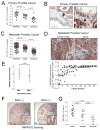
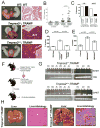

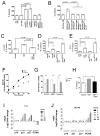
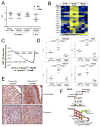
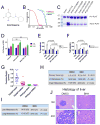
Comment in
-
Prostate cancer: TMPRSS2 promotes metastasis through proteolysis.Nat Rev Urol. 2014 Oct;11(10):546. doi: 10.1038/nrurol.2014.238. Epub 2014 Sep 2. Nat Rev Urol. 2014. PMID: 25179500 No abstract available.
Similar articles
-
Androgen-Induced TMPRSS2 Activates Matriptase and Promotes Extracellular Matrix Degradation, Prostate Cancer Cell Invasion, Tumor Growth, and Metastasis.Cancer Res. 2015 Jul 15;75(14):2949-60. doi: 10.1158/0008-5472.CAN-14-3297. Epub 2015 May 27. Cancer Res. 2015. PMID: 26018085
-
Inhibition of TMPRSS2 by HAI-2 reduces prostate cancer cell invasion and metastasis.Oncogene. 2020 Sep;39(37):5950-5963. doi: 10.1038/s41388-020-01413-w. Epub 2020 Aug 10. Oncogene. 2020. PMID: 32778768 Free PMC article.
-
Activation of hepatocyte growth factor/MET signaling initiates oncogenic transformation and enhances tumor aggressiveness in the murine prostate.J Biol Chem. 2018 Dec 28;293(52):20123-20136. doi: 10.1074/jbc.RA118.005395. Epub 2018 Nov 6. J Biol Chem. 2018. PMID: 30401749 Free PMC article.
-
Targeting the Hepatocyte Growth Factor and c-Met Signaling Axis in Bone Metastases.Int J Mol Sci. 2019 Jan 17;20(2):384. doi: 10.3390/ijms20020384. Int J Mol Sci. 2019. PMID: 30658428 Free PMC article. Review.
-
The role of HGF/c-Met signaling in prostate cancer progression and c-Met inhibitors in clinical trials.Expert Opin Investig Drugs. 2011 Dec;20(12):1677-84. doi: 10.1517/13543784.2011.631523. Epub 2011 Oct 28. Expert Opin Investig Drugs. 2011. PMID: 22035268 Free PMC article. Review.
Cited by
-
ACE2 and TMPRSS2 in human kidney tissue and urine extracellular vesicles with age, sex, and COVID-19.Pflugers Arch. 2024 Oct 9. doi: 10.1007/s00424-024-03022-y. Online ahead of print. Pflugers Arch. 2024. PMID: 39382598
-
Unraveling the pathogenic interplay between SARS-CoV-2 and polycystic ovary syndrome using bioinformatics and experimental validation.Sci Rep. 2024 Oct 2;14(1):22934. doi: 10.1038/s41598-024-74347-y. Sci Rep. 2024. PMID: 39358491 Free PMC article.
-
Menin in Cancer.Genes (Basel). 2024 Sep 21;15(9):1231. doi: 10.3390/genes15091231. Genes (Basel). 2024. PMID: 39336822 Free PMC article. Review.
-
The miRNAs 203a/210-3p/5001-5p regulate the androgen/androgen receptor/YAP-induced migration in prostate cancer cells.Cancer Med. 2024 Aug;13(16):e70106. doi: 10.1002/cam4.70106. Cancer Med. 2024. PMID: 39149855 Free PMC article.
-
Whole patient knowledge modeling of COVID-19 symptomatology reveals common molecular mechanisms.Front Mol Med. 2023 Jan 4;2:1035290. doi: 10.3389/fmmed.2022.1035290. eCollection 2022. Front Mol Med. 2023. PMID: 39086962 Free PMC article.
References
-
- Netzel-Arnett S, Hooper JD, Szabo R, Madison EL, Quigley JP, Bugge TH, et al. Membrane anchored serine proteases: a rapidly expanding group of cell surface proteolytic enzymes with potential roles in cancer. Cancer Metastasis Rev. 2003;22:237–58. - PubMed
-
- Hooper JD, Clements JA, Quigley JP, Antalis TM. Type II transmembrane serine proteases. Insights into an emerging class of cell surface proteolytic enzymes. J Biol Chem. 2001;276:857–60. - PubMed
-
- Szabo R, Bugge TH. Type II transmembrane serine proteases in development and disease. Int J Biochem Cell Biol. 2008;40:1297–316. - PubMed
-
- Szabo R, Wu Q, Dickson RB, Netzel-Arnett S, Antalis TM, Bugge TH. Type II transmembrane serine proteases. Thromb Haemost. 2003;90:185–93. - PubMed
Publication types
MeSH terms
Substances
Grants and funding
LinkOut - more resources
Full Text Sources
Other Literature Sources
Chemical Information
Medical
Molecular Biology Databases
Miscellaneous

